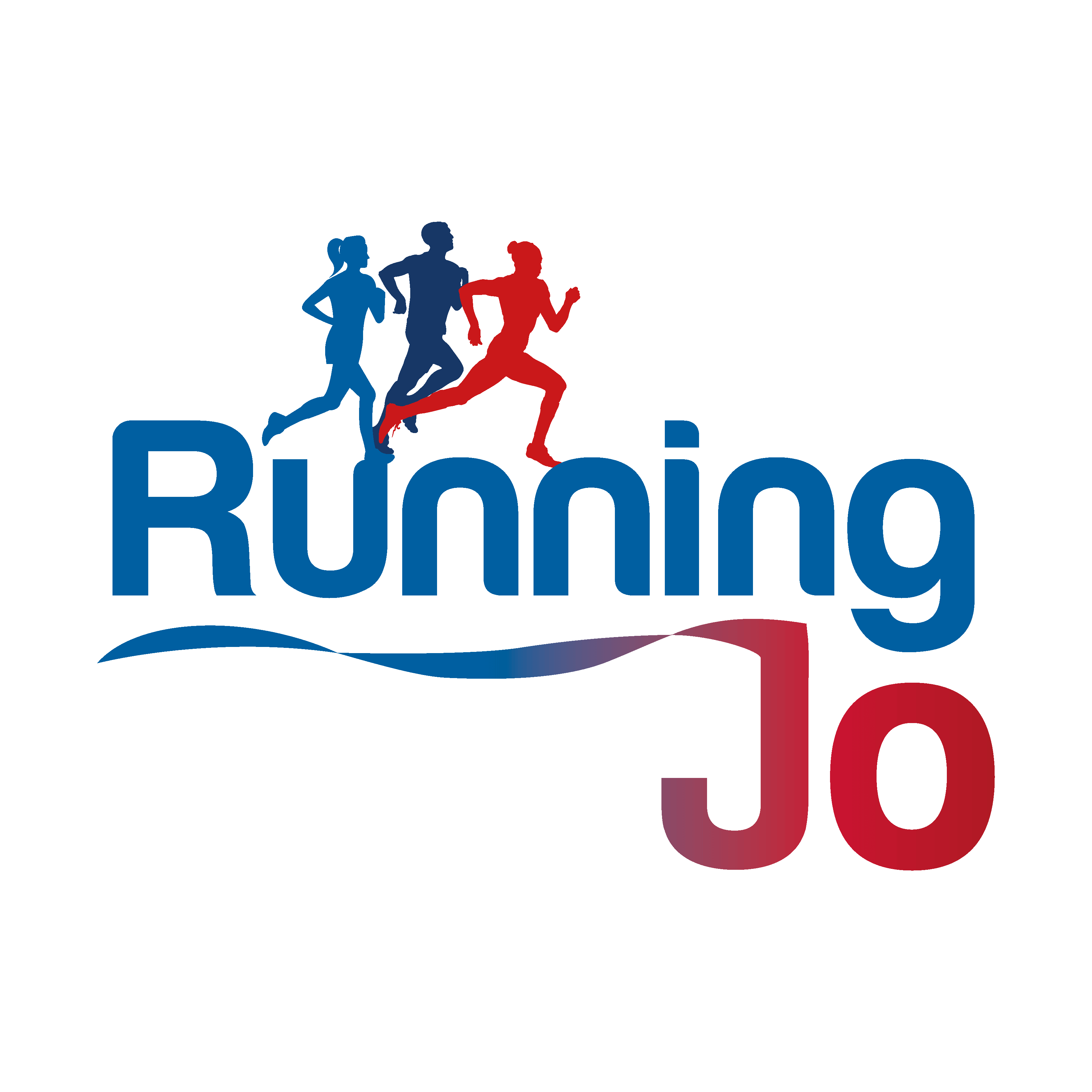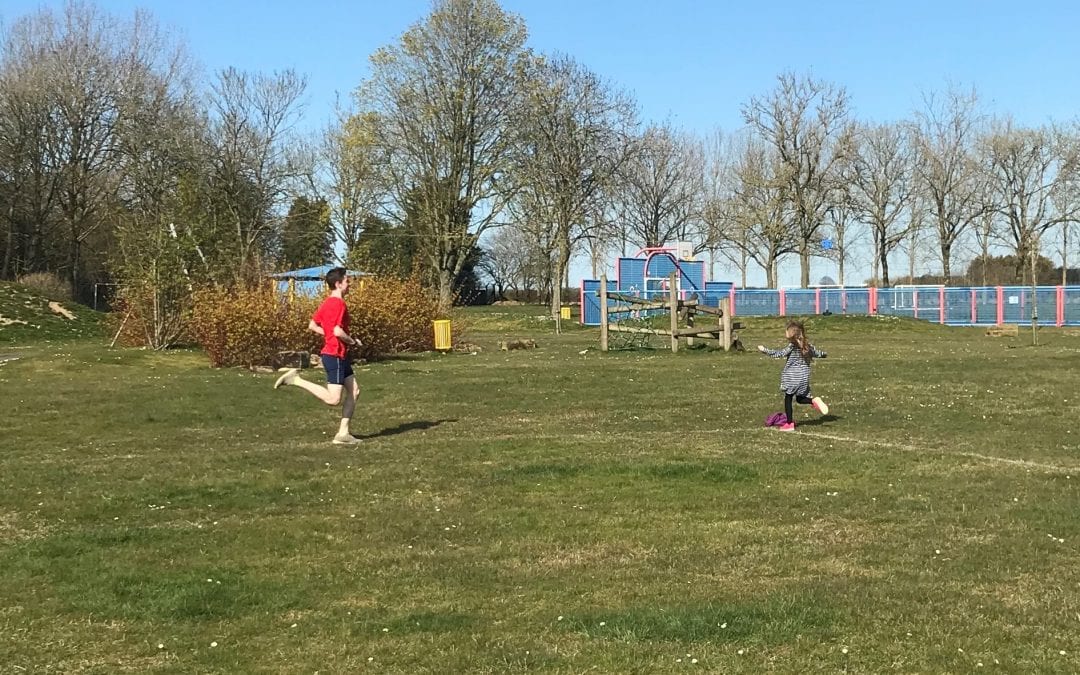You’re never too old to laugh at the word “Fartlek”!
The name for this fartlek family running session came from my 8-year-old daughter when I told her we were doing a fartlek this week.
“Eat my farts!” combines both fun and good quality running training. It is based on the well-known training method of fartlek running. Fartlek improves fitness by combining faster and slower running into one continuous effort.
As a fully qualified British Athletics Coach I have lots of experience delivering mixed-ability group sessions. One of the biggest challenges since the coronavirus lockdown has been getting some good quality training done with the demands on family time. So I have adapted several of my favourite sessions to make them suitable all the family regardless of ability or age. Just make sure you read the Golden Rules below before you start.
Each session has been tested by myself with my 14-year-old son and 8-year-old daughter. This one has been declared “The best one yet” by both of them. So put on your trainers and have some fun!
Warm Up
Every session must start with a warm up. There is a simple, short but effective warm up for all ages after the explanation of the session.
“Eat my farts” Fartlek
Fartlek is a Scandinavian word for “speed play”. Fartlek are continuous runs made up of mixed pace running. They can be structured or, like this one, completely random.
Fartlek is great for building fitness by making your heart and lungs work harder with the bursts of fast running interspersed between steady continuous running. Running hard during the faster sections make you work anaerobically. Then the active recovery during the jogging sections improves your ability to process lactate and lower your heart rate more efficiently.
As each runner jogs and runs fast at their own pace this session works well for mixed abilities or ages. When it’s your turn to control the fartlek the challenge to surprise your fellow runners and beat them back to the start adds a fun, competitive element that makes you work harder.
How much space do you need?
Any open space such as a football or cricket pitch or field. This session also works well in a much more limited space such as your garden if that’s all you have available. You can also run up and down a road or path.
The session
1. Before you start
Make sure you all know the course – this can be round a football/cricket pitch or round the garden. Alternatively it can be along a path or road.
Agree in which order you will take turns to control the fartlek.
2. Start jogging
Everyone starts jogging in the same direction along the course. You should jog at your own pace.
3. “Eat my farts!”
The runner with the first turn to control the fartlek chooses when to shout “Eat my Farts!”.
4. Turn round and run back to the start as fast as you can
On the shout of “Eat my farts!” all the runners must turn round and run back to the start as fast as they can.
5. Start jogging again.
When everyone is back at the start you all set off jogging again along the course.
6. “Eat my farts!”
The next runner chooses when to shout “Eat my farts!”. Everyone runs back to the start again as fast as they can.
7. Try to surprise the other runners
Make it more fun by trying to surprise the other runners. Shout “Eat my farts!” when they are not expecting it. Then try to beat them back to the start. For example, you might let everyone jog for longer so the anticipation builds or next time make it a short one.
8. Repeat until you need a rest
Take turns to control the fartlek. Continue to jog out and run back as fast as you can until you need to rest.
9. Watch the video
Watch the video for a practical demonstration of how the “Eat my farts!” works.
How long should the fartlek be?
These are approximate guidelines. What is appropriate for each child depends on their individual age, their developmental stage (pre, mid or post-puberty) and their level of fitness.
In general, younger and less physically developed children should run for less time with more recovery between each set.
If you have different age children then base the length of the session on the youngest child. Alternatively the younger child can miss some sets. Instead they can control the session by shouting “Eat my farts!” even though they are not running. This keeps them involved in the session even though they aren’t running.
Remember the Golden Rules below. Do not make your children do more than they want to do. The session is supposed to be fun!
Age 8 – 11 years
3 sets of 3 – 5 minutes each with 4 minutes recovery between each set
Age 12 – 14 years
3 sets of with 5 – 6 minutes with 4 minutes recovery between each set
Age 15 – 17 years
4 sets of 5 – 6 minutes with 3 – 4 minutes recovery between each set
Warm Up
Follow this warm up which is suitable for all ages.
If you would like to add some additional volume to your running session then you can start by jogging some additional laps of the pitch but this is not appropriate for young children.
Jog for 30 seconds
10 x Single Arm circles – forwards and backwards each arm
10 x Double arm circles – forwards and backwards
Jog for 30 seconds
Leg swings x 10 forwards and backwards each leg
Leg swings x 10 across each leg
Jog for 30 seconds
10 x bounces (two-footed mini jumps on balls of your feet)
10 x hops each leg
Jog for 30 seconds
10 x star jumps
Jog for 30 seconds
10 seconds pitter patter steps on the spot (small jogging steps on the spot)
10 seconds fast feet (small steps on the spot as fast as you can)
Jog 30 seconds
2 x 10ms walking on your toes
2 x 10ms walking on your heels
2 x 10ms high knee raises
2 x 10ms back kicks
The Golden Rules
As a fully qualified, licensed and insured British Athletics Coach there are some golden rules to follow to ensure the running sessions are appropriate for young athletes.
1. The sessions are suitable for all ages from 8 years upwards.
These sessions are specifically designed for children aged 8 and upwards. If you may choose to some adaptations for younger children you must ensure you follow the golden rules below even more closely.
2. Running should be fun.
Running with children should be fun. Some of the sessions have a competitive element but the overriding principle is enjoyment. Show your children that competition can be fun – even if you don’t win.
3. Don’t make your children do more than they want to do.
If your children want to stop, let them stop. If you think they are unlikely to finish the whole session, then plan ahead. Take a ball, some books, drawing or even an electronic device to keep them entertained when they’ve had enough of running. Then you can carry on.
4. Make sure you always warm up.
Warming up is essential before any strenuous exercise to minimise injury for both children and adults. Everyone who does the session must do the warm up.
5. No more than one or two running sessions each week for children.
Children should engage in a variety of running, jumping, throwing and multi-sport activities rather than specialise in any one sport or discipline until they have reached puberty. Even if you think they are destined to become Olympic Champions!
6. Children are not just mini-adults.
Children have different physiology to adults. What is suitable for adults is not always suitable for children. For example, children are less able to utilise their lactate energy system so may need more recovery than adults. Children should not run as far or as often as adults. The growth plates in their bones are susceptible to damage from too much impact from running which may have long lasting effects on their growth and development.
7. If something hurts then STOP.
You can minimise injury by warming up effectively and not running when you are tired, unwell or already injured. If something starts to hurt during the running session then stop immediately. Follow the principles of rest, ice, compression and elevation (RICE) and seek medical advice if appropriate.
8. Seek medical advice first.
If you or any members of your family have any underlying health condition then seek medical advice before engaging in strenuous activity.

